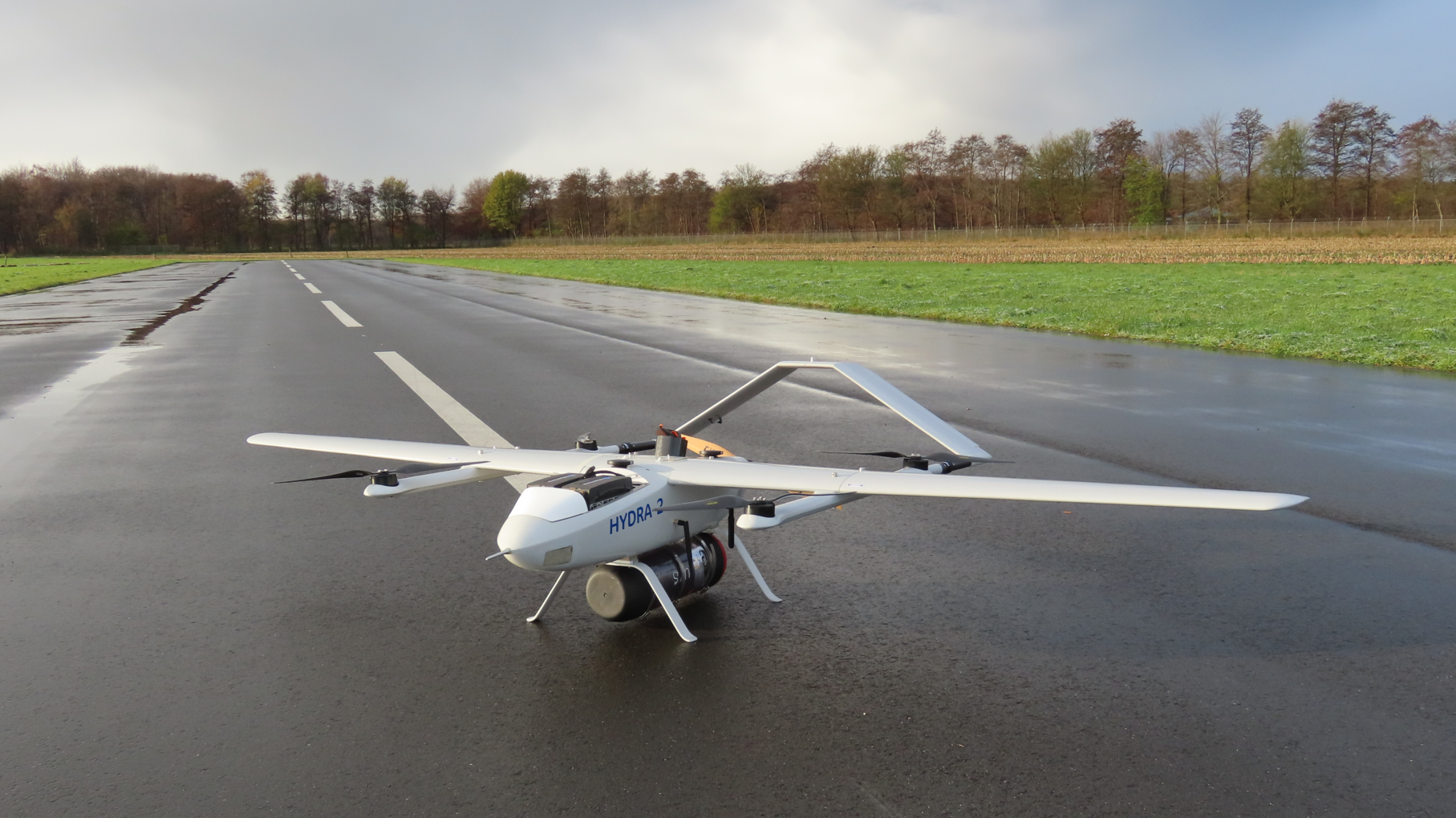“Climate-neutral aviation is a complex puzzle”
Programme leader Bram Peerlings on the Climate-Neutral Aviation knowledge programme
To reduce emissions of greenhouse gases and thereby combat climate change, we have to become greener. Aviation has a responsibility in this transition too. Alternatives to fossil fuels, new forms of propulsion and other types of aircraft can all help make aviation more sustainable. The NLR knowledge programme Climate-Neutral Aviation is investigating various forms of sustainable aviation. The ultimate aim is to make climate-neutral flying possibly by 2050.
What does the Climate-Neutral Aviation knowledge programme involve?
“We take a helicopter view, looking at making aviation greener. For instance, we carry out research into what the effects of various developments and innovations would be on emissions from the sector as a whole. New developments are coming rapidly, one after the other. That makes it crucial to create and maintain an overall picture before we start zooming in on the details. A solution can for instance look really promising from one perspective whereas it doesn’t fit in well at all from another point of view. To take just one example, aircraft that are more lightweight emit less CO2 but if those weight savings mean that the production, maintenance or recycling consumes a great deal more energy, then maybe it’s not so sustainable after all if you look at the whole lifecycle.”
“Now that the consequences of climate change are becoming increasingly visible, we can’t afford to be doing the wrong things. Using that broader perspective on various developments lets us make the right choices about what to focus on in further research into more sustainable aviation.”
About the programme leader
Bram Peerlings works as an adviser and researcher into sustainable aviation at NLR, as well as being involved for many years in research into the climate effects of aviation. In addition to technical education in aerospace technology, he also studied scientific communication.
“That gives me a fascinating understanding of the way technology and society interact.” And although he regularly went plane-spotting at Schiphol as a child, he prefers travelling by train nowadays. In his role as the programme leader for Climate-Neutral Aviation, Bram looks at the bigger picture that will ultimately yield a new aviation system that fits within the limits of what the planet can take.
How do you make sure the focus is correct?
“There are three lines of approach that we use within the programme. We start with a broad view: what impact does aviation have on the climate? That means taking account of any growth, particularly in the emerging economies, plus the potential availability of renewable energy. So we’re analysing how new types of aircraft can help reduce the emissions and the climate impact of aviation. Secondly, we look at developments in new aircraft and new energy carriers: non-fossil kerosene, green hydrogen or batteries. The newest of those are aircraft with electric propulsion and hydrogen-powered planes, so they’re being studied most. Thirdly, we’re looking at the use of more sustainable aircraft. If the new aircraft are to be deployed in practice, all sorts of things will have to change at the airports too. Filling up with hydrogen is a completely new process, for instance.”
Are electric aircraft and hydrogen-powered planes the solution for climate-neutral aviation?
“There’s no single solution for making aviation greener, no silver bullet. Making flying more sustainable is about a lot more than just new planes. We also look at optimising routes and flight paths, for instance. There are zones in the airspace that are more climate-sensitive, or less, depending on the composition of the local atmosphere. There are some places where they leave contrails, which increases the overall climate impact of a flight. That’s true even if the flight otherwise emits exactly the same amounts of CO2 and particulates as on a flight through a less climate-sensitive zone. Under certain conditions, these contrails – the condensation stripes that are often incorrectly called ‘vapour trails’ – can persist and trigger cloud formation. At night in particular, this can have a significant warming effect.”
“Our quest focuses on the broader perspective, the overall climate impact. If we look exclusively at CO2 emissions, flying a detour around a climate-sensitive area is never a smart move. Whereas there are some cases – taking all the other conditions into account – where it may genuinely help lower the climate impact. That’s why the broader perspective is indispensable when you’re look at sustainable aviation.”
“If the climate objectives for 2050 are to be achieved, we’ll have to have a completely different setup for aviation.”
Why is it important to have this programme?
“I think that aviation has brought a lot of benefits to humanity and that it can have added value for society. However, it also bears a major responsibility in the climate challenges that we’re facing. Sadly, though, I get the idea that this responsibility isn’t felt everywhere. Although aviation’s share of climate change is now limited to ‘just’ 3.5%, that could be a much higher proportion by 2050. If the climate objectives for 2050 are to be achieved, we’ll have to have a completely different setup for aviation. We need to pay more attention to the climate effects and to the energy needed. There are still too many parties in the aviation sector who see alternative fuels as the holy grail, without wondering if there’ll be enough. Or If they do think about it, they often forget that energy is needed not only for the actual flying but also for manufacturing the aircraft and all the other processes on the ground. Aviation will only be able to keep providing added value responsibly if we also include all that, rather than simply passing the buck to the energy sector.”
Let’s zoom in a bit from that bigger picture. Could you give a more concrete example of a project that your group is working on at the moment?
“By 2025, we want to have our Pipistrel electric research craft, which is currently battery-powered, flying on hydrogen. To do that, we’re first carrying out research on a smaller scale with various unmanned drones. That lets us examine step by step – each bigger and more complex than the last – how the systems work and what’s needed for a flight to genuinely succeed.”
Liquid hydrogen or gas?
“Liquid. For aviation applications, we see that as a more promising solution than hydrogen gas, even though it will demand more changes. It will for instance need a special, well-insulated tank that can store the hydrogen at 250 degrees Celsius below zero. That will be a much heavier tank than is needed for kerosene. And you’ve obviously got to take that extra weight up into the air with you, which affects the aircraft’s energy consumption. On board, that hydrogen has to be warmed back up again, from minus 253 to about plus 50 degrees Celsius, so that it can be used in the fuel cell. A new system will be needed for that too.”
“We’re going to carry out research into all those separate elements and then bring it all together in the Pipistrel. It’s precisely that integration of different technologies and systems that’s such a key step in finally being genuinely able to fly on hydrogen in practice. And we want to help bring that about.”
What about sustainable kerosene then?
“There are basically three different propulsion methods for sustainable aircraft. Shorter distances can be covered by battery-powered electric flight, although trains are often a good option for those kinds of journeys. As yet, we expect that hydrogen will be suitable for continental flights, for instance within Europe. For long-haul flights such as those from Europe to America, hydrogen seems less appropriate because of aspects such as the weight of the tank. That’s where green kerosene – also known as SAF or sustainable aviation fuel – comes into the picture. It can be made from residual biological waste flows, or produced from green hydrogen and CO2 from the air. For longer distances, sustainable kerosene seems to be the best option. On top of that, it will probably be easier to obtain – in other parts of the world too – than green hydrogen.”
“An additional benefit of sustainable kerosene is that we won’t have to change much in the planes that we already have. That doesn’t mean that tickets won’t go up in price, though: sustainable kerosene is more expensive than fossil kerosene and we don’t expect that to change. It’s because synthetic kerosene has to be produced from scratch instead of simply pumping fossil raw materials up from the ground without having to incur the costs of actually producing them.”
Why is it important that NLR is working on this?
“NLR is accumulating knowledge and offering its understandings to other parties about the climate challenge in aviation. We carry out research and focus on technological development, paying attention to certification as well and helping develop the safety requirements. We don’t manufacture aircraft ourselves and we aren’t part of the day-to-day operations at airports, but we have highly specialised knowledge that lets us help the various parties who are involved. That’s massively important because the clock’s ticking. If we want to have hydrogen-powered planes for a significant proportion of flights by 2050, those planes will have to be coming on line for use by around 2035, so we’ll have to be doing the product development by about 2030. Which means that all the technologies and the separate systems will have to be ready in just six years’ time. The year 2050 is already only just around the corner.”
How do you see the future?
“As one of my colleagues often says, I don’t have a crystal ball. Exactly what the future looks like and how to shape it are things we’re going to have to discover over the coming years. We’re certainly living in interesting times, at any rate. In the final analysis, this programme is working towards the targets for 2050 that were set in the Paris Agreement. It’s hugely important that we keep thinking half a dozen steps ahead. Most of the emissions from aviation are currently from the combustion of kerosene. It won’t be too long before we have solutions for that and then other aspects such as recycling the products start to matter more, relatively. That’s why I think it’s important to be looking at that already. In the end, that’s how we can progress towards an aviation system that is genuinely climate-neutral.”
Read more about all the NLR knowledge programmes.
Video: SFD Scaled Flight Demonstrator maiden flight



